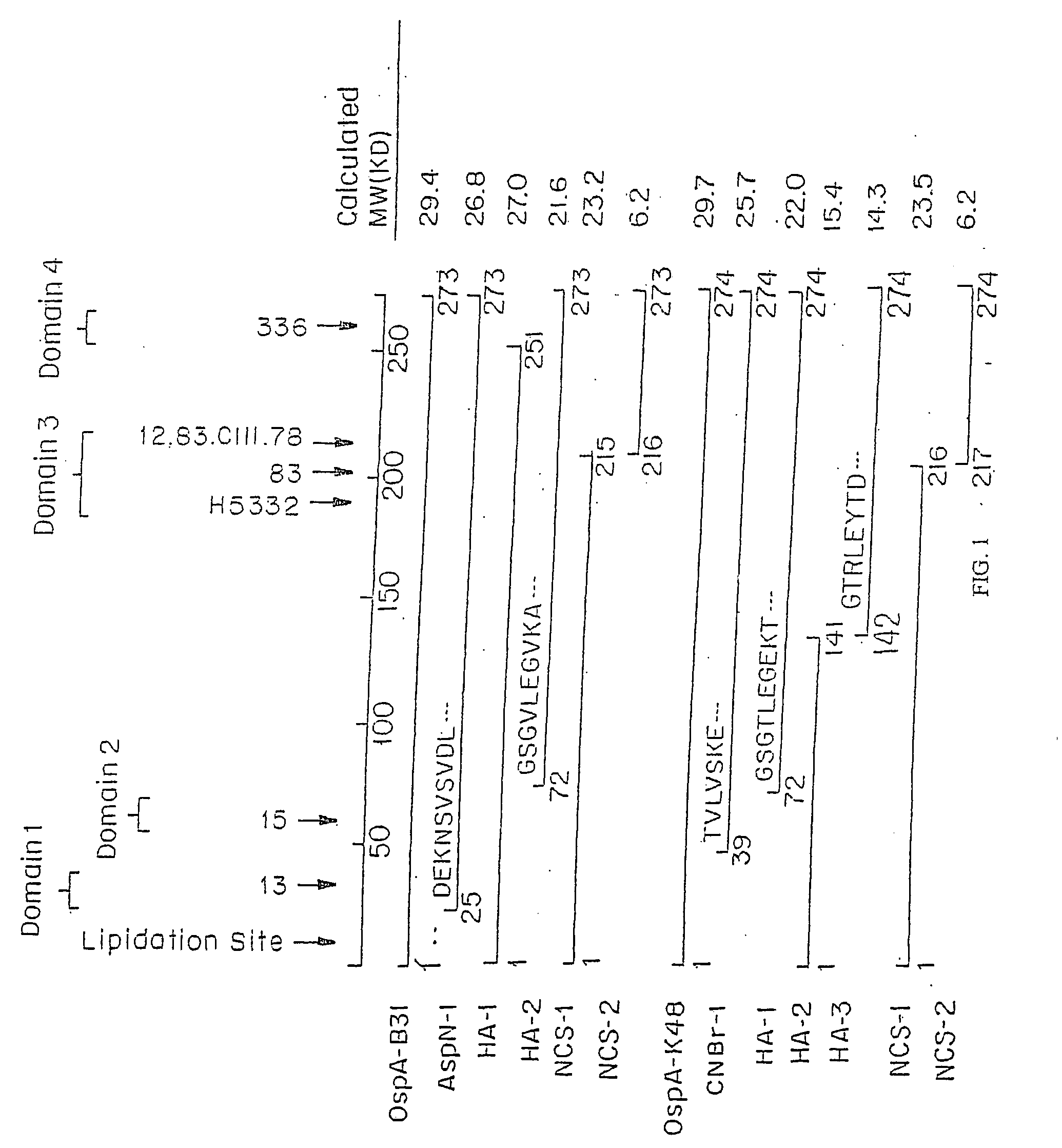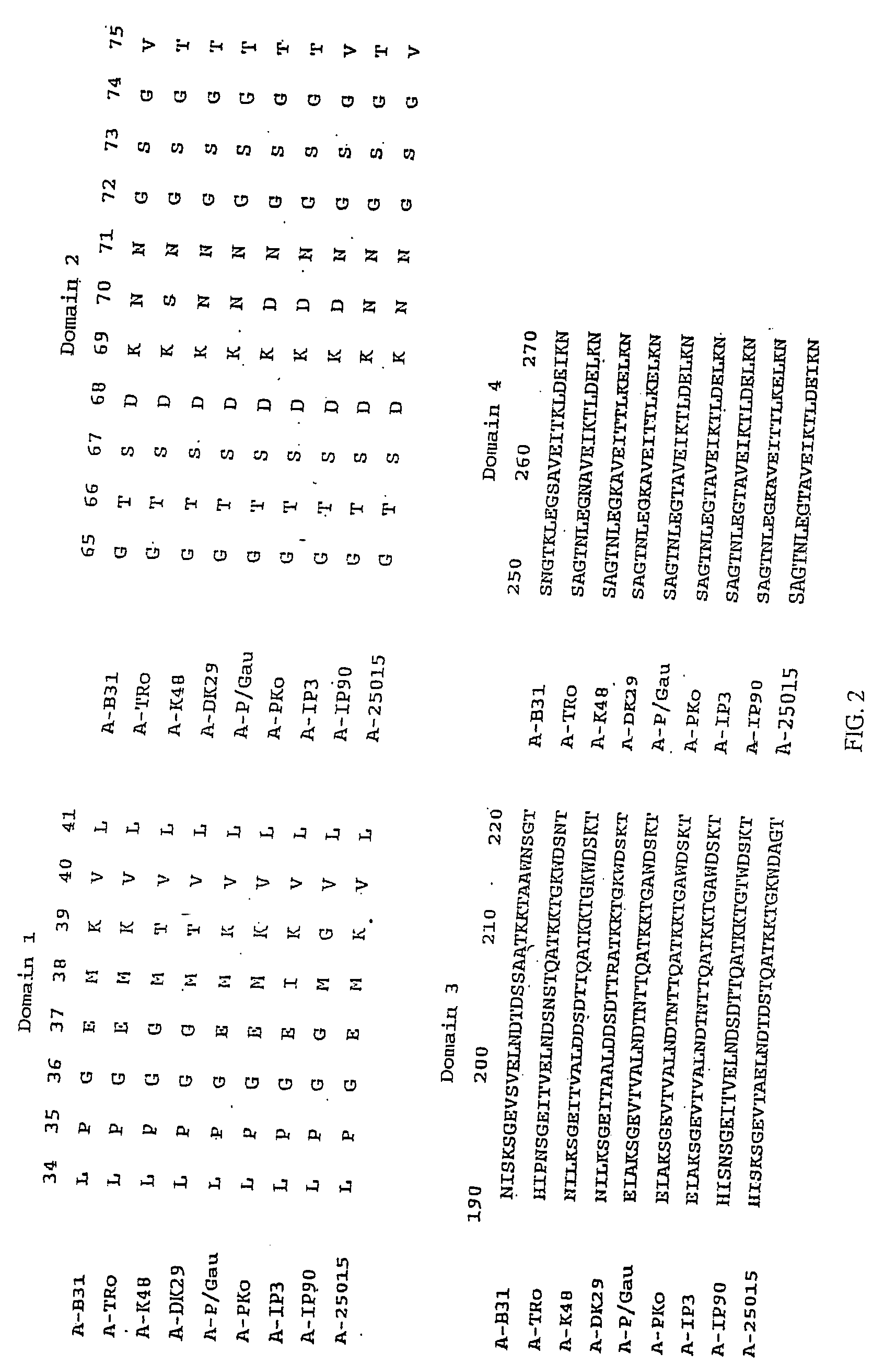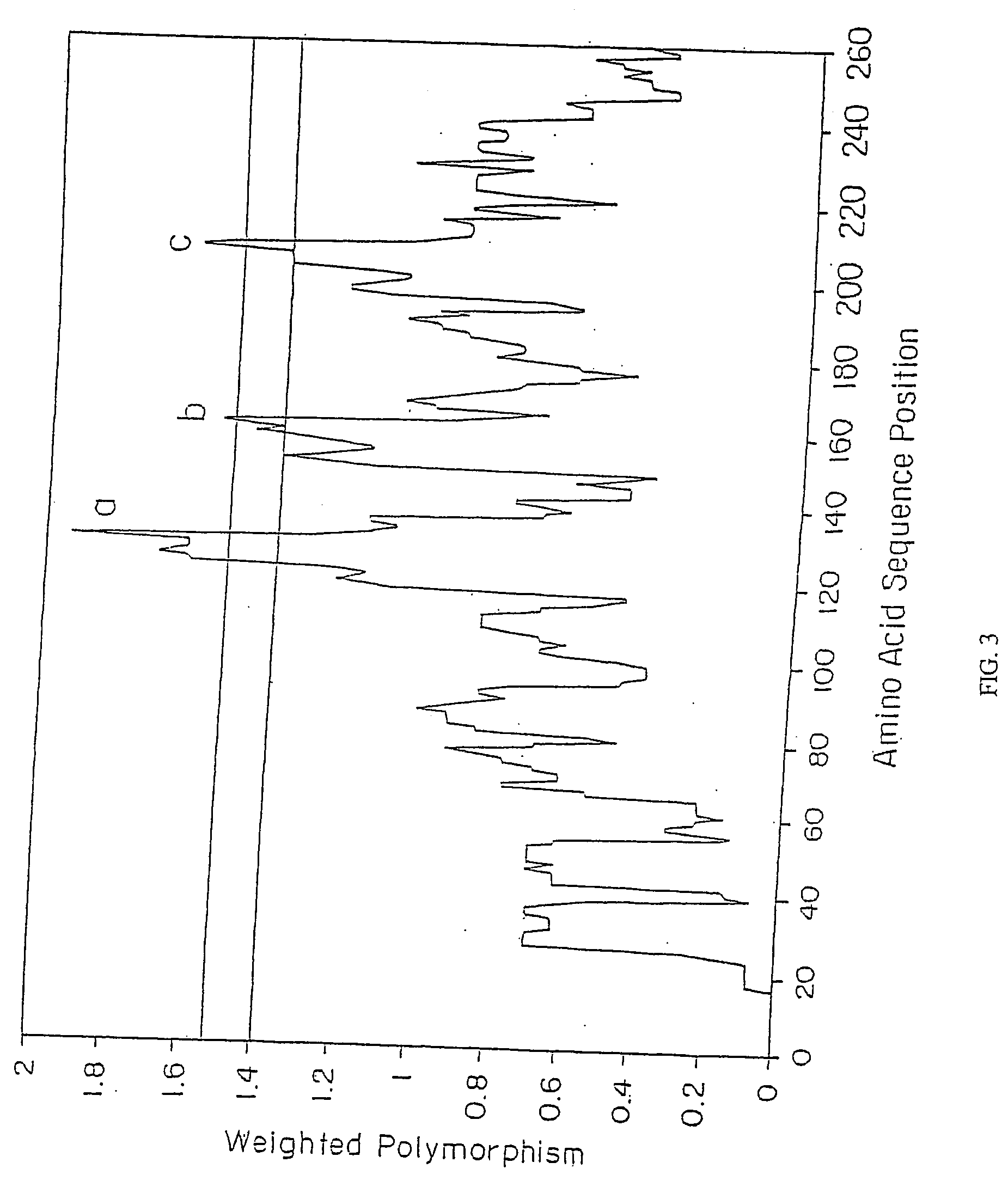Recombinant constructs of Borrelia burgdorferi
a recombinant construct and strain technology, applied in the field of recombinant constructs of borrelia burgdorferi, can solve the problems of ineffective treatment of infection, often delayed treatment, and ineffective treatment with antibiotics, so as to prevent infection and/or disease, prevent lyme disease, and great utility
- Summary
- Abstract
- Description
- Claims
- Application Information
AI Technical Summary
Benefits of technology
Problems solved by technology
Method used
Image
Examples
example 1
Purification of Borrelia Burgdorferi Outer Surface Protein A and Analysis of Antibody Binding Domains
[0138] This example details a method for the purification of large amounts of native outer surface protein A (OspA) to homogeneity, and describes mapping of the antigenic specificities of several anti-OspA MAbs. OspA was purified to homogeneity by exploiting its resistance to trypsin digestion. Intrinsic labeling with 14C-palmitic acid confirmed that OspA was lipidated, and partial digestion established lipidation at the amino-terminal cysteine of the molecule.
[0139] The reactivity of seven anti-OspA murine monoclonal antibodies to nine different Borrelia isolates was ascertained by Western blot analysis. Purified OspA was fragmented by enzymatic or chemical cleavage, and the monoclonal antibodies were able to define four distinct immunogenic domains (see FIG. 1). Domain 3, which included residues 190-220 of OspA, was reactive with protective antibodies known to agglutinate the org...
example 2
Identification of an Immunologically Important Hypervariable Domain of the Major Outer Surface Protein A of Borrelia
[0165] This Example describes epitope mapping studies using chemically cleaved OspA and TrpE-OspA fusion proteins. The studies indicate a hypervariable region surrounding the single conserved tryptophan residue of OspA (at residue 216, or in some cases 217), as determined by a moving window population analysis of OspA from fifteen European and North American isolates of Borrelia. The hypervariable region is important for immune recognition.
[0166] Site-directed mutagenesis was also conducted to examine the hypervariable regions more closely. Fluorescence and circular dichroism spectroscopy have indicated that the conserved tryptophan is part of an alpha-helical region in which the tryptophan is buried in a hydrophobic environment (McGrath, B. C., et al., Vaccines, Cold Spring Harbor Laboratory Press, Plainview, N.Y.; pp. 365-370 (1993)). More polar amino acid side-cha...
example 3
Borrelia Strains and Proteins
[0183] Proteins and genes from any strain of Borrelia can be utilized in the current invention. Representative strains are summarized in Table I, above.
A. Genes Encoding Borrelia Proteins
[0184] The chimeric peptides of the current invention can comprise peptides derived from any Borrelia proteins. Representative proteins include OspA, OspB, OspC, OspD, p12, p39, p41 (fla), p66, and p93. Nucleic acid sequences encoding several Borrelia proteins are presently available (see Table II, below); alternatively, nucleic acid sequences encoding Borrelia proteins can be isolated and characterized using methods such as those described below.
TABLE IIReferences for Nucleic Acid Sequences for Several Proteinsof Various Borrelia StrainsStrainp93OspAp41 (fla)K48X69602 (SID 67)X62624 (SID 8)X69610PGauSID 73X62387 (SID 10)X69612 (SID 51)DK29NDX63412 (SID 49)X69608 (SID 53)PKoX69803 (SID 77)X65599 (SID 57)X69613 (SID 131)PTrobX69604 (SID 71)X65598 (SID 135)X69614Ip3N...
PUM
| Property | Measurement | Unit |
|---|---|---|
| pH | aaaaa | aaaaa |
| temperature | aaaaa | aaaaa |
| temperature | aaaaa | aaaaa |
Abstract
Description
Claims
Application Information
 Login to View More
Login to View More - R&D
- Intellectual Property
- Life Sciences
- Materials
- Tech Scout
- Unparalleled Data Quality
- Higher Quality Content
- 60% Fewer Hallucinations
Browse by: Latest US Patents, China's latest patents, Technical Efficacy Thesaurus, Application Domain, Technology Topic, Popular Technical Reports.
© 2025 PatSnap. All rights reserved.Legal|Privacy policy|Modern Slavery Act Transparency Statement|Sitemap|About US| Contact US: help@patsnap.com



